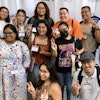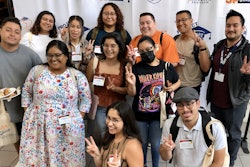JONESBORO, Ark.
Arkansas State University is participating in a history research project on the “braceros” guest-worker program that brought Mexican laborers to the United States to address a labor shortage, beginning in World War II.
“This was a time of significant economic and social transformation in eastern Arkansas,”’ says Brady Banta, associate director of the university’s heritage studies program. “`Documenting the bracero program provides an opportunity to explore these changes at a personal level.”
Researchers hope to do at least 25 interviews and collect archival materials on how the braceros contributed to life in the state. They want to collect period hand tools, clothing, photographs, identification cards, letters and other documents.
The work will become part of the Bracero History Archive, a project of the Center for History and New Media, George Mason University, the Smithsonian National Museum of American History, Brown University, and the Institute of Oral History at the University of Texas at El Paso.
Few, if any, former braceros still live in the Mississippi River Delta in Arkansas. ASU researchers hope to talk to former tenant farmers who hired the workers and to other laborers who worked alongside the Mexicans. They also plan to talk to merchants, business people, doctors, and others who provided services to them. Most of the interviews will be conducted in September.
In 1942, the United States and Mexico entered agreements to address the U.S. wartime labor shortage and allow Mexicans to work in the country legally as temporary, contracted labor, mostly in farming.















